Riverbanks provide valuable wildlife habitat, with the ability to support a diverse range of plant and animal species. Riverbanks often need softening in areas where there has been previous management, particularly in urban areas.
This is because, ideally a river would be left to erode and deposit naturally along its floodplain, benefiting wildlife as well, but in urbanized areas this isn’t possible because of potential damage to infrastructure.
Therefore, the previous bank protection methods used, such as dredging, have created an over deepened channel with steep banks that is disconnected from its floodplain.
Bank softening works along the River Witham will look at creating a new low inset floodplain at Dysart Park, Stonebridge Close and Downstream Belton Lane into Queen Elizabeth Park, improving habitats and the aesthetic value of the river.
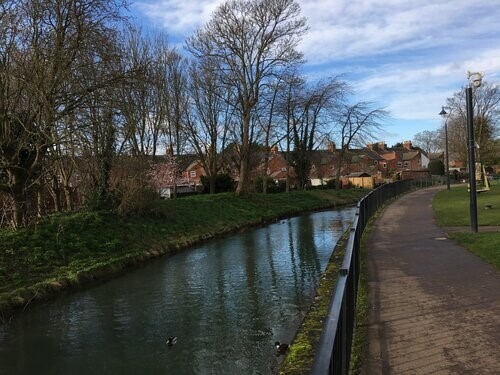
The River Witham, at Wyndham Park, with confining hard banks.
Bank Reprofiling
Reprofiling the bank creates a flatter slope to reconnect the river with its floodplain, reduce flow rates, by narrowing the river channel, and encourage good vegetation growth.
Banks can be reprofiled in a number of ways, commonly through the use of brushwood mattress and coir rolls and matting.
Brushwood Mattresses
Brushwood mattresses are composed of layers of brushwood faggots, held together by a grid of fixing posts.
They are used to reduce the riverbank height and decrease the angle of the slope in order to reconnect the river with its floodplain. The implementation of brushwood mattresses create refuge areas for fish and invertebrates, and aquatic margins for plants to colonize. Brushwood mattresses can create sinuosity in the river by narrowing the channel, creating a meandering planform. They are very good at trapping sediment and so are often used to backfill berms in berm creation.
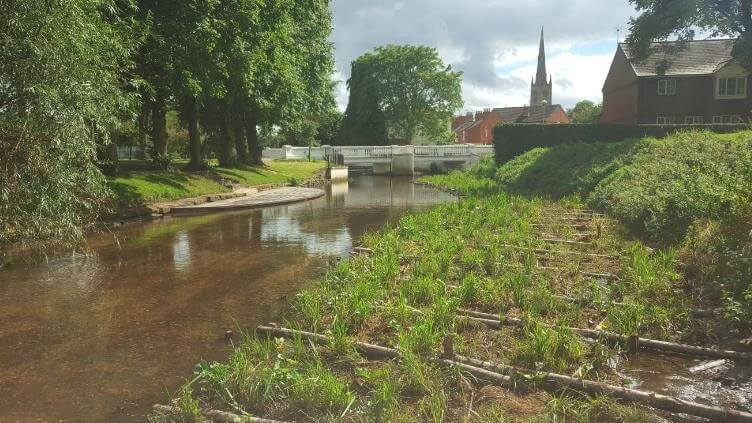
Brushwood mattress installed along River Witham at Wyndham Park, Grantham
Coir Rolls and Matting
Coir rolls are composed of dense coir, a material made primarily from coconut shells, and are primarily installed at the toe of river banks, in order to prevent undercutting.
They can be unplanted or pre-established with native plant species to provide a more immediate habitat structure.
Coir matting is used to protect a reprofiled river from bank erosion, adding a layer of matting before adding a layer of topsoil and grass seed over the top.
This is then held in place by wooden or wire pegs, providing an area where mature vegetation can establish quickly, creating habitat for a range of species.
Coir rolls and matting can also be used in berm creation, creating the toes of berms or providing the surface where plant species can establish, over the backfill of the berm.
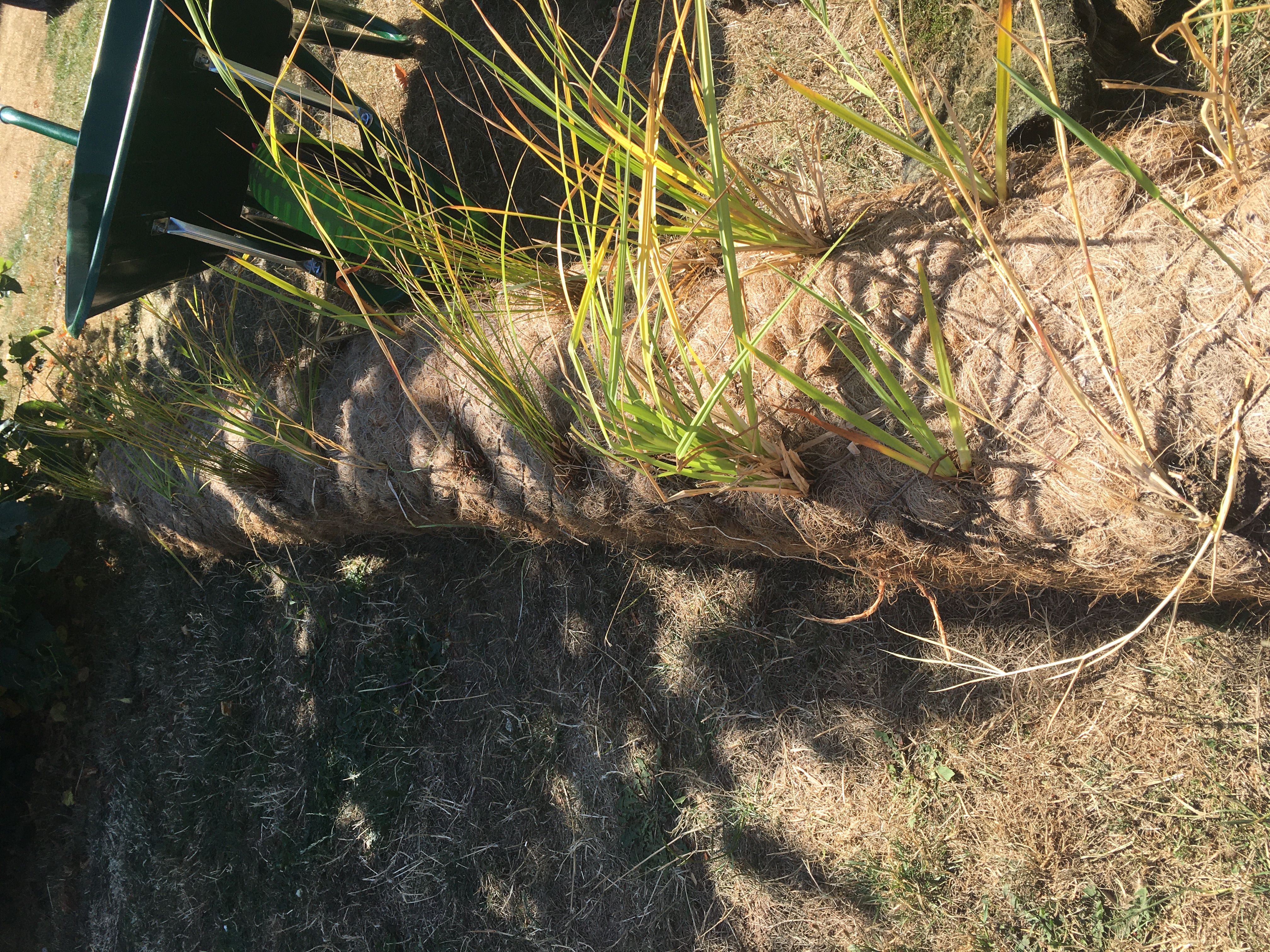
Pre-planted coir roll
Bank Softening Examples
Branston Beck
Along Branston Beck, in Lincolnshire, a brushwood mattress was installed in a project led by Lincolnshire Rivers Trust in order to create sinuosity in the channel and improve in-stream habitat.
The river had historically been dredged and straightened, creating a disconnection between the river and its floodplain, and creating a wide, uniform channel.
The brushwood mattresses, along with tree management works, addressed this disconnection, narrowing the channel and created a diverse habitat suitable for a range of plant and animal species.
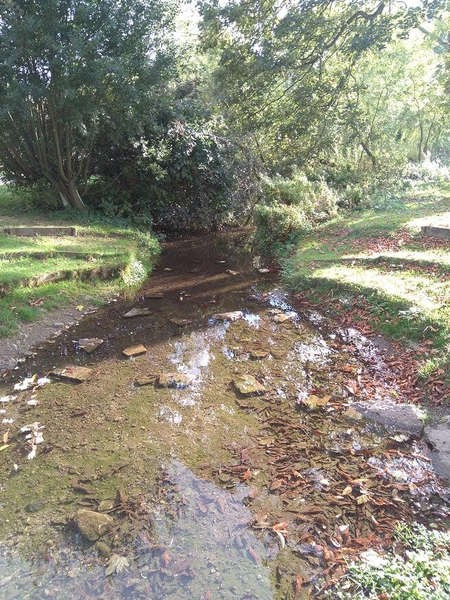

Branston Beck, before the river was restored, showing the over widened, heavily shaded channel.
Branston Beck after the river was restored, using tree management techniques and installing brushwood mattresses. Led by Lincolnshire Rivers Trust.
River Great Stour
Along the River Great Stour, in Kent, a project was implemented between the Wild Trout Trust, the Godinton Piscatorials, the Godinton House Preservation Trust and the Environment Agency, to restore the river, reprofiling the banks and improving in channel habitat.
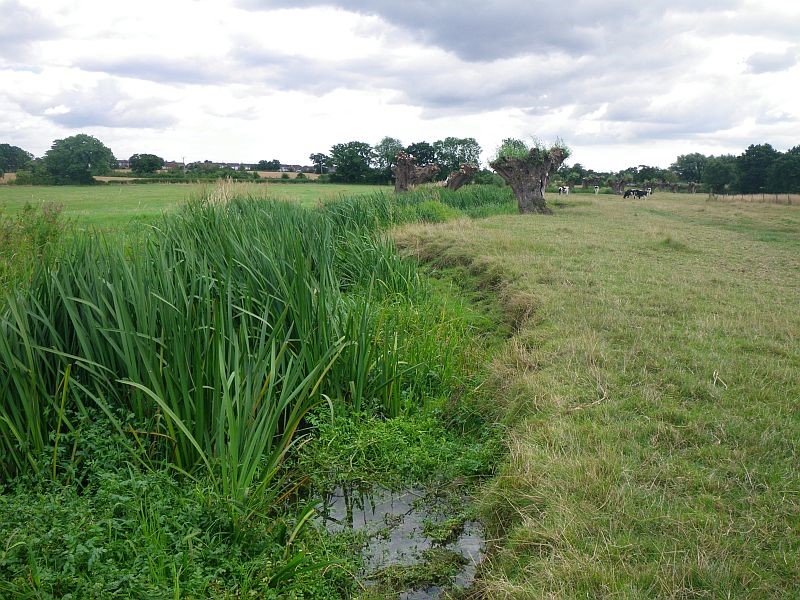
Reeds choking the channel.
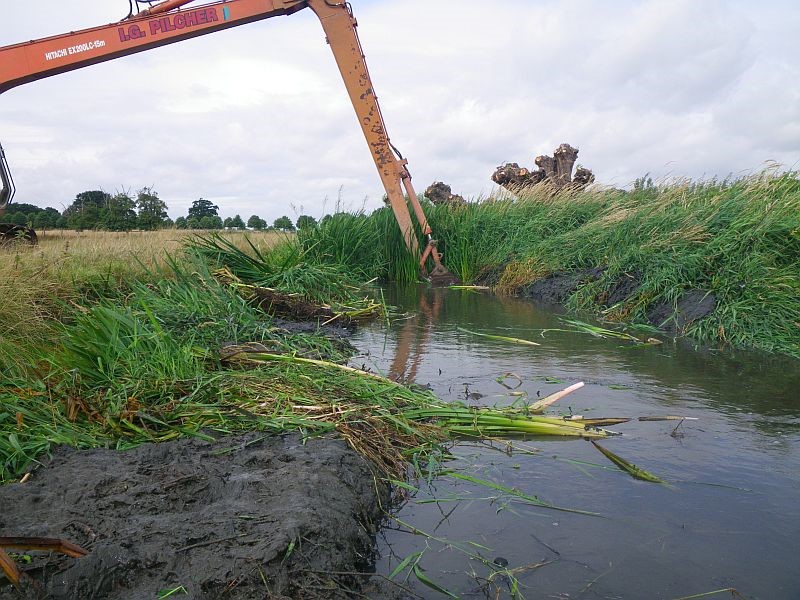
Clearing the channel and pushing reeds into the river bank.
The river has been historically dredged and the over widened channel has become choked with reeds.
The in-channel reeds were pulled back and squashed to increase conveyance and clear the channel.
Brash mattresses and faggot revetments were installed on the inside bends of meanders to narrow the channel and create a more natural river course.
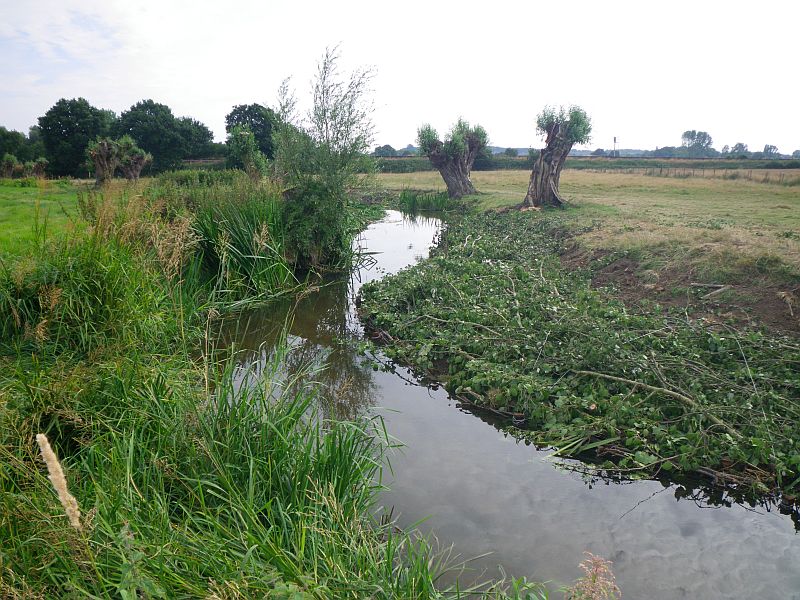
Brash mattress and faggot revetment, reprofiling the river bank on the inside bend of a meander.






